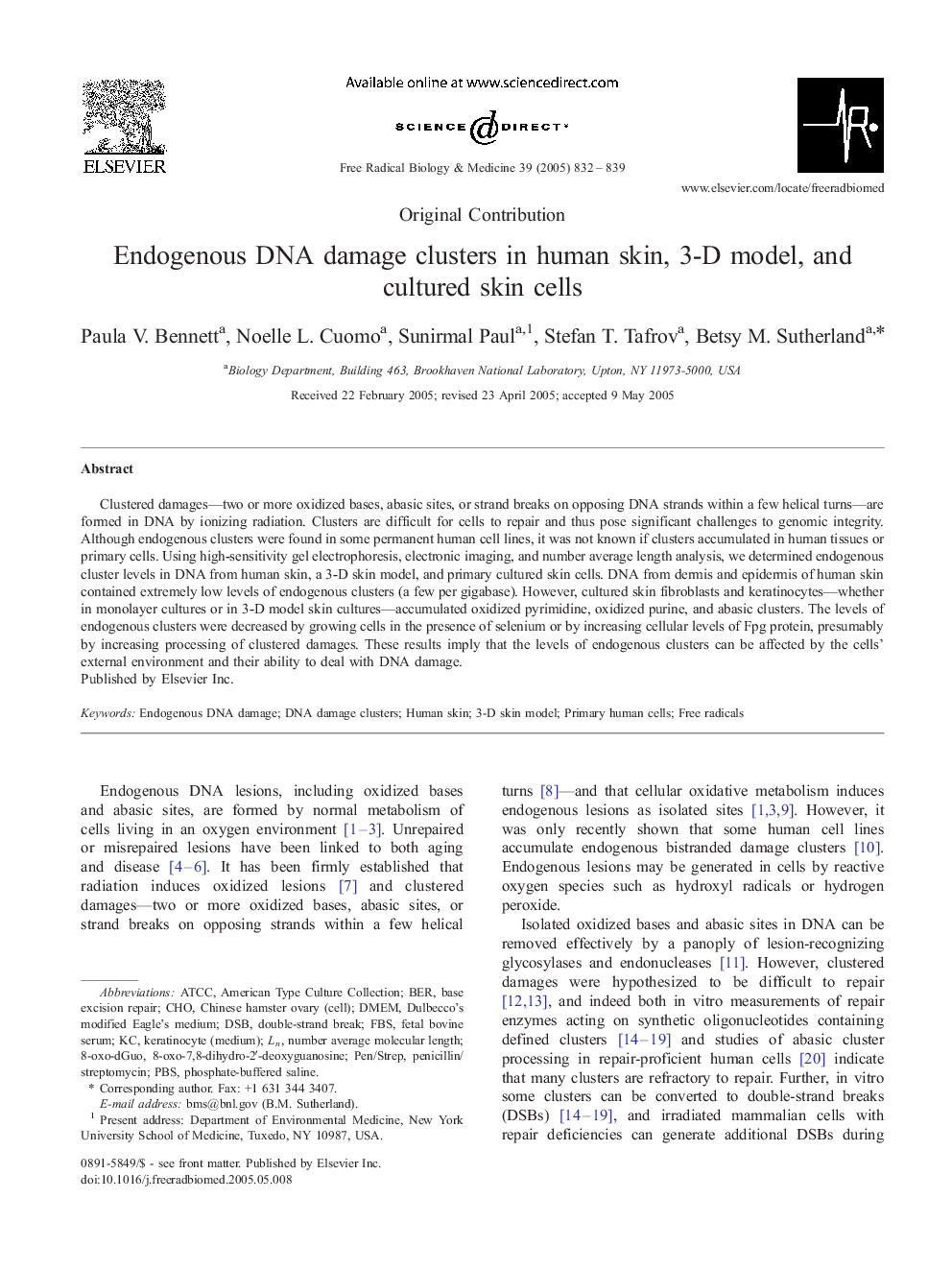| Article ID | Journal | Published Year | Pages | File Type |
|---|---|---|---|---|
| 10739065 | Free Radical Biology and Medicine | 2005 | 8 Pages |
Abstract
Clustered damages-two or more oxidized bases, abasic sites, or strand breaks on opposing DNA strands within a few helical turns-are formed in DNA by ionizing radiation. Clusters are difficult for cells to repair and thus pose significant challenges to genomic integrity. Although endogenous clusters were found in some permanent human cell lines, it was not known if clusters accumulated in human tissues or primary cells. Using high-sensitivity gel electrophoresis, electronic imaging, and number average length analysis, we determined endogenous cluster levels in DNA from human skin, a 3-D skin model, and primary cultured skin cells. DNA from dermis and epidermis of human skin contained extremely low levels of endogenous clusters (a few per gigabase). However, cultured skin fibroblasts and keratinocytes-whether in monolayer cultures or in 3-D model skin cultures-accumulated oxidized pyrimidine, oxidized purine, and abasic clusters. The levels of endogenous clusters were decreased by growing cells in the presence of selenium or by increasing cellular levels of Fpg protein, presumably by increasing processing of clustered damages. These results imply that the levels of endogenous clusters can be affected by the cells' external environment and their ability to deal with DNA damage.
Keywords
PBSATCCBERFBSDMEMDSB8-oxo-7,8-dihydro-2′-deoxyguanosineDulbecco's modified Eagle's mediumEndogenous DNA damageChobase excision repairFree radicalsfetal bovine serumPrimary Human Cellsdouble-strand breakpen/strepAmerican Type Culture CollectionPhosphate-buffered salinePenicillin/streptomycinHuman skin
Related Topics
Life Sciences
Biochemistry, Genetics and Molecular Biology
Ageing
Authors
Paula V. Bennett, Noelle L. Cuomo, Sunirmal Paul, Stefan T. Tafrov, Betsy M. Sutherland,
